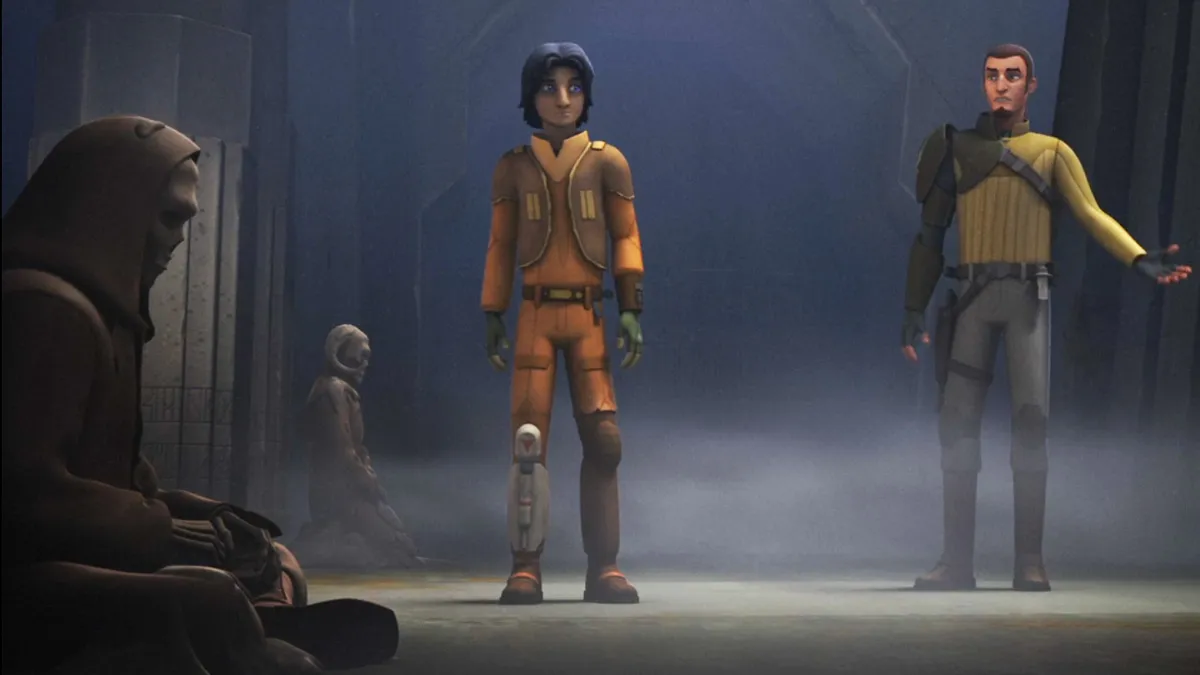It’s no secret that Star Wars draws heavily from cultures all around the world. But Japan is key to the looks and much of the inspiration of the galaxy far, far away. George Lucas fell in love with Japanese culture in the late ‘60s, after watching Akira Kurosawa’s films while attending USC.
Everything from the Jedi to Darth Vader’s iconic look was inspired by Japanese fashion and ideas. While The Acolyte might not be fans’ favorite television series, it is doing Lucas proud.
What is the Barash Vow?
Though the Barash Vow has been a part of Star Wars lore for years, The Acolyte is the first time it’s been depicted on screen. The concept briefly reared it’s head in the series’ 2nd episode, when it’s revealed that one of the assassin’s targets is Master Torbin, a Jedi with an incredibly guilty conscience.
The voluntary vow was an oath taken by certain Jedi as a form of atonement – or just for the zealous few who wanted to reconnect with the Force. Those who took it disengaged from all things related to the Jedi’s mission, and committed themselves to nothing but reconnecting with the will of the Force. These Jedi didn’t lose their titles, but they did stop interacting with the other Jedi – and most others – as a whole.
The first to take the vow was Master Barash Silvain around 400 years before the formation of the Empire. After trusting her instincts over the will of the force, Silvain felt responsible for the death of countless civilians. Unable to trust herself, she removed herself from the order and vowed to reconnect with the Force.
What is the Barash Vow based on IRL?
The idea is very similar to Asceticism, a lifestyle of abstinence from worldly pleasures. Its been observed in many religions and philosophical traditions, though the Buddhist variation is most widely known. Those who wish to follow the practice leave sensual pleasures behind in favor of a life of abstinence. Though we might think of abstinence as only applying to sex, asceticism applies to all things.
By reducing life to its most simplistic version, it is thought that practitioners can find renewed spiritualism, redemption, salvation, and enlightenment. Asceticism was popularized by the Buddha, who spent years meditating and living off of very little sustenance before promoting the “middle way,” a path that removed indulgences but didn’t require the intense abstinence of asceticism.
Just like the Buddhist practice it was based on, the Barash Vow looked to realign the Jedi with the spiritual realm, in this case, the Force, and allow them to reintegrate with their brethren. Though this was the case for most, some instances surpassed the desire for redemption and reconnection with the Force.
When Jedi Masters take their Padawan to find their first Kyber Crystals, the apprentice must complete the trial alone. While the Masters meditate outside of the icy caves of Illum, the Padawans face dangerous trials. Most Padawans are successful, but there is always a chance they never return and leave their Master to a grizzly fate.
Jedi Masters are forbidden to leave their missing protégé behind. With no choice but to wait until the bitter end, their meditation transcends Asceticism and turns to the Japanese Buddhist practice of Sokushinbutsu, or self-mummification. Sokushinbutsu takes up to 3000 days to complete in real life. Through dehydration and an ever-increasing restriction of caloric intake, Japanese Buddhist monks slowly shrink their organs, and eventually die of starvation. While there are other religions and spiritual practices that use death as a form of spiritual enlightenment (Chinese monks have used self-immolation in the past), only Japanese monks have been recorded choosing this particular avenue. The process leaves their bodies well preserved, though environmental factors can make or break the process.
The Jedi masters left in the cave of Illum didn’t have the luxury of slowly weening off nutrients and water, but let’s hope the Force allowed them to go as peacefully and spiritually as the few monks dedicated enough to commit to self-mummification.
